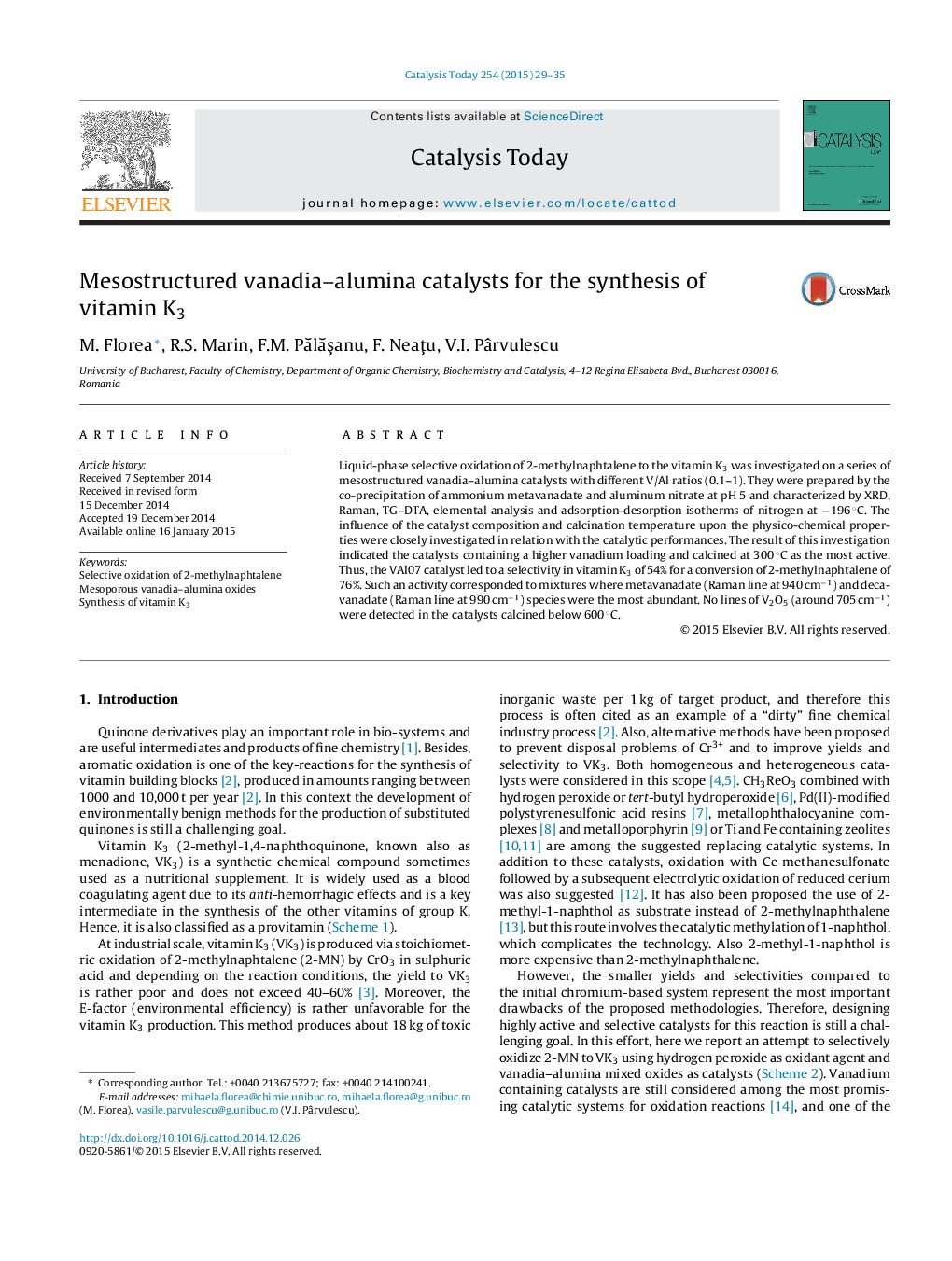| Article ID | Journal | Published Year | Pages | File Type |
|---|---|---|---|---|
| 53743 | Catalysis Today | 2015 | 7 Pages |
•Mesoporous V2O5–Al2O3 is an active catalyst for selective oxidation of 2-methylnaphtalene to vitamin K3.•The vanadia surface composition includes different entities as a function of the vanadium content and calcination temperature.•Catalytic oxidation of 2-methylnaphtalene occurs preferentially on highly dispersed decavanadate species.
Liquid-phase selective oxidation of 2-methylnaphtalene to the vitamin K3 was investigated on a series of mesostructured vanadia–alumina catalysts with different V/Al ratios (0.1–1). They were prepared by the co-precipitation of ammonium metavanadate and aluminum nitrate at pH 5 and characterized by XRD, Raman, TG–DTA, elemental analysis and adsorption-desorption isotherms of nitrogen at −196 °C. The influence of the catalyst composition and calcination temperature upon the physico-chemical properties were closely investigated in relation with the catalytic performances. The result of this investigation indicated the catalysts containing a higher vanadium loading and calcined at 300 °C as the most active. Thus, the VAl07 catalyst led to a selectivity in vitamin K3 of 54% for a conversion of 2-methylnaphtalene of 76%. Such an activity corresponded to mixtures where metavanadate (Raman line at 940 cm−1) and decavanadate (Raman line at 990 cm−1) species were the most abundant. No lines of V2O5 (around 705 cm−1) were detected in the catalysts calcined below 600 °C.
Graphical abstractFigure optionsDownload full-size imageDownload high-quality image (143 K)Download as PowerPoint slide
